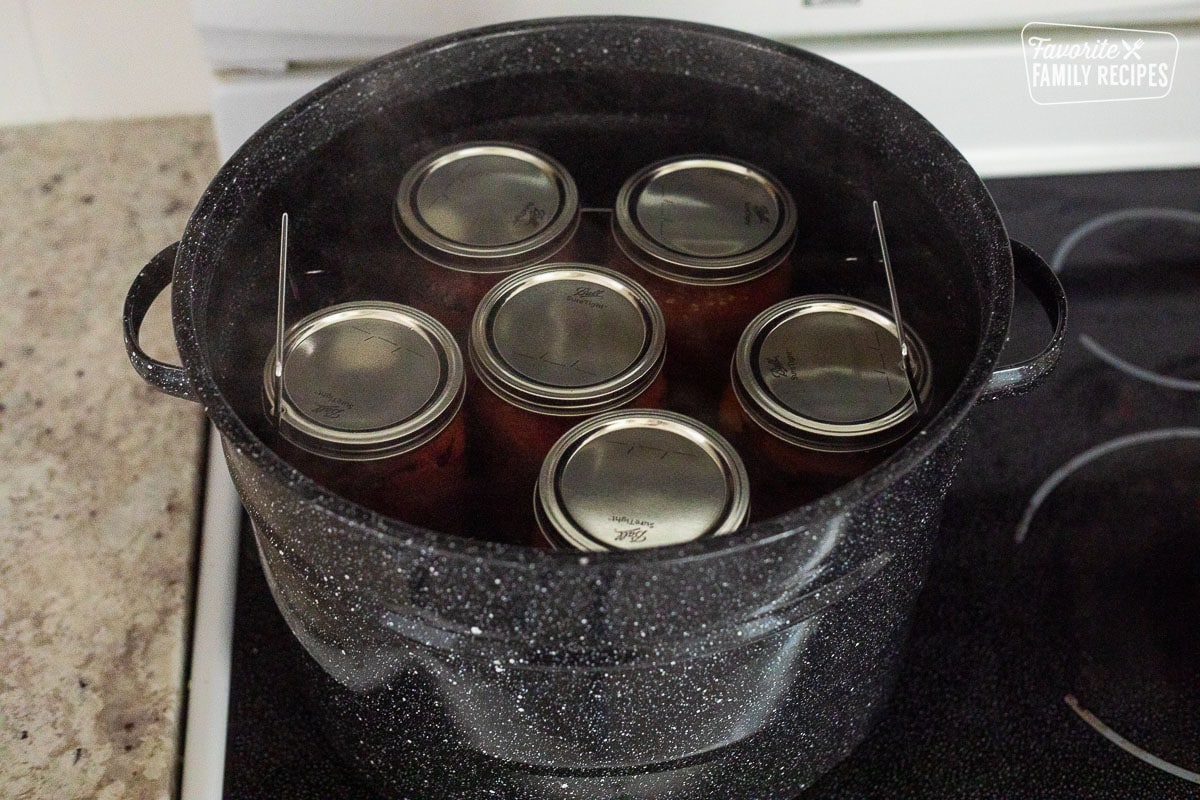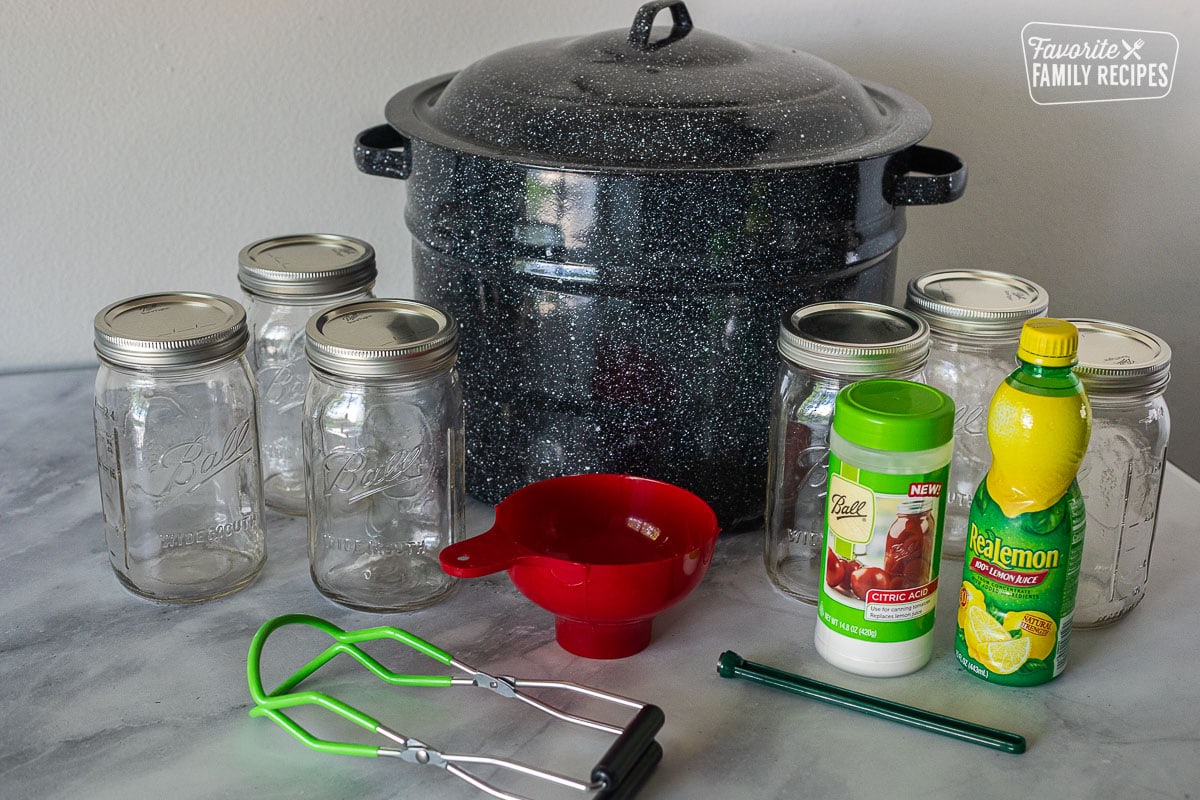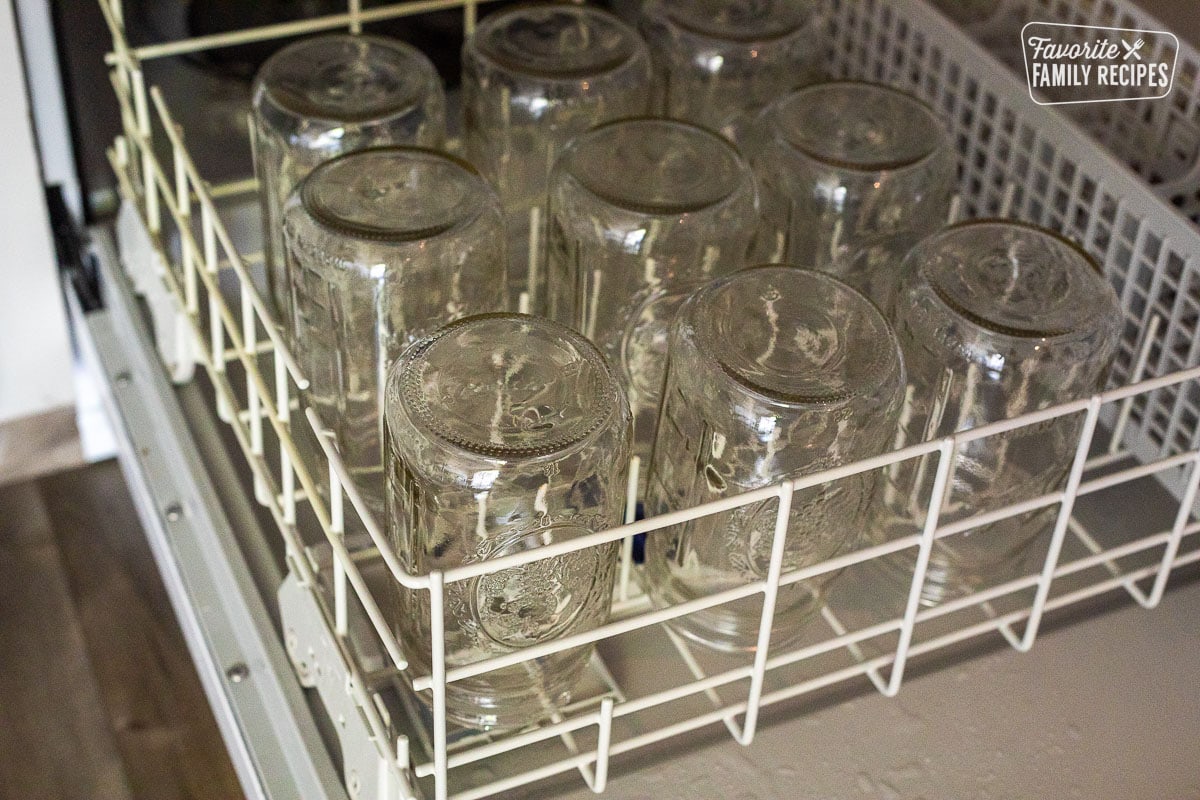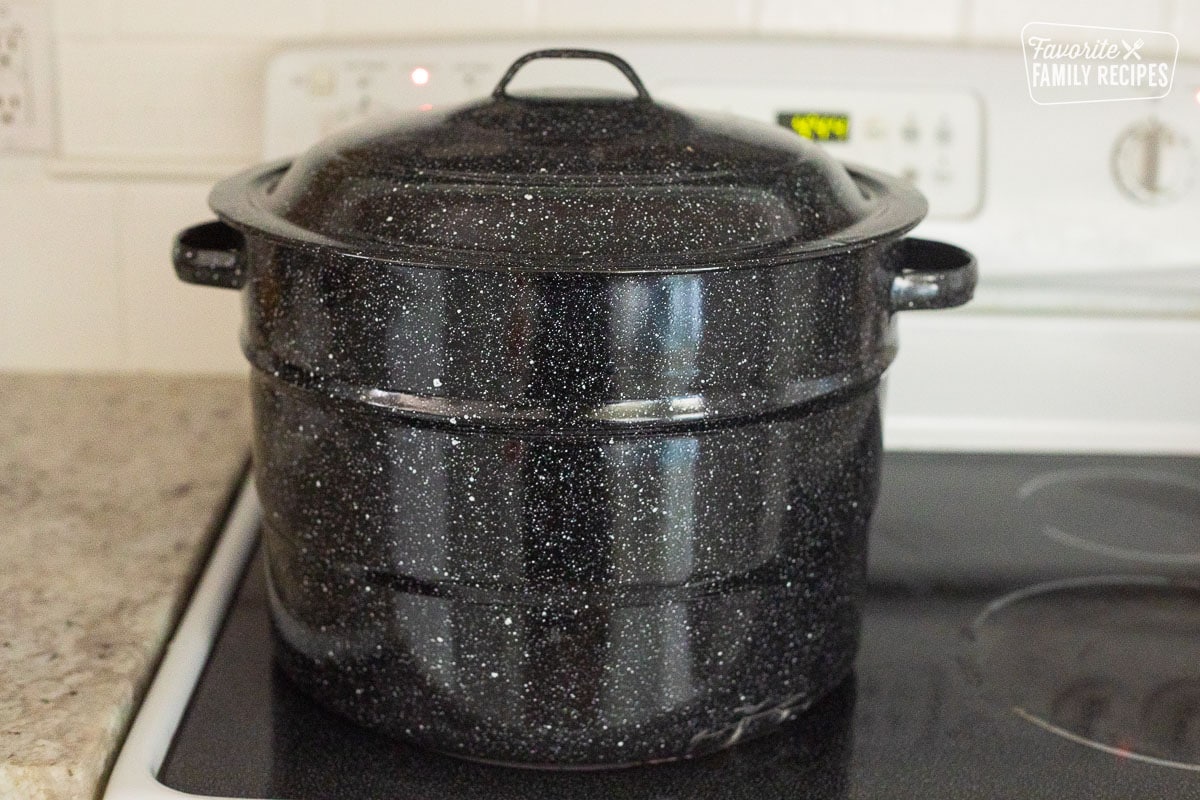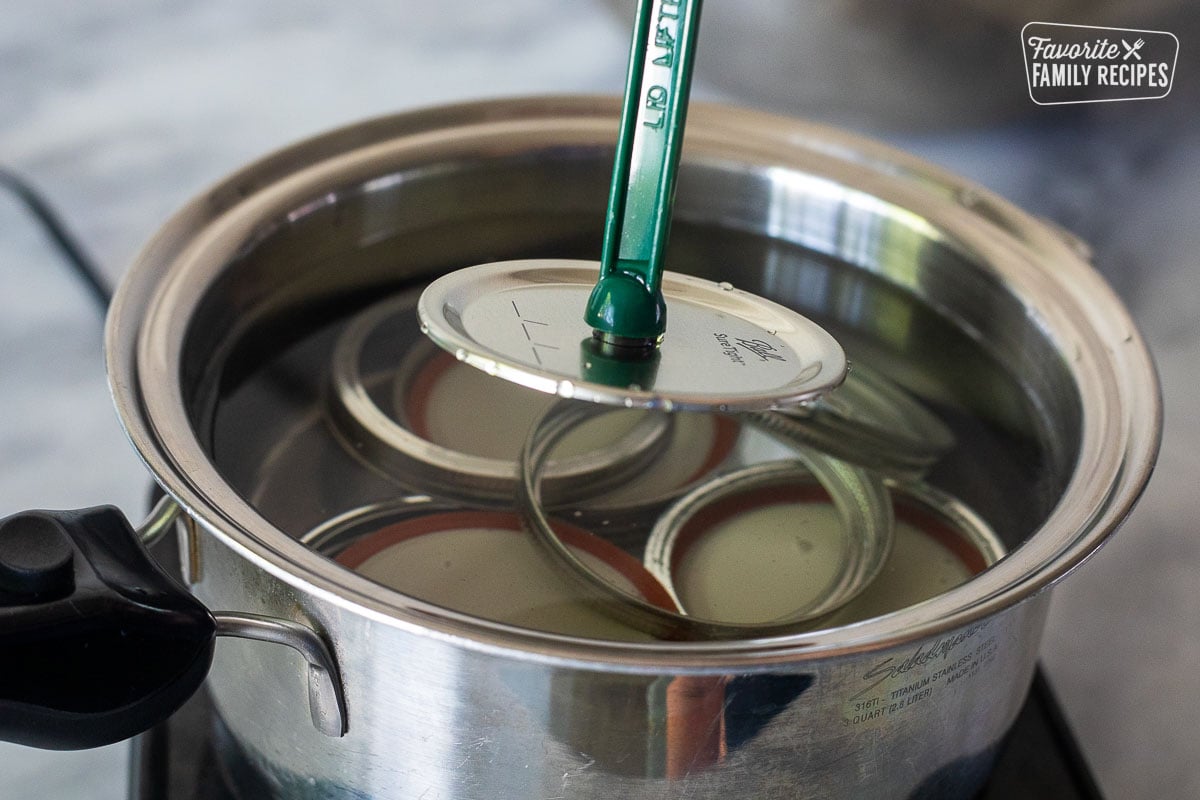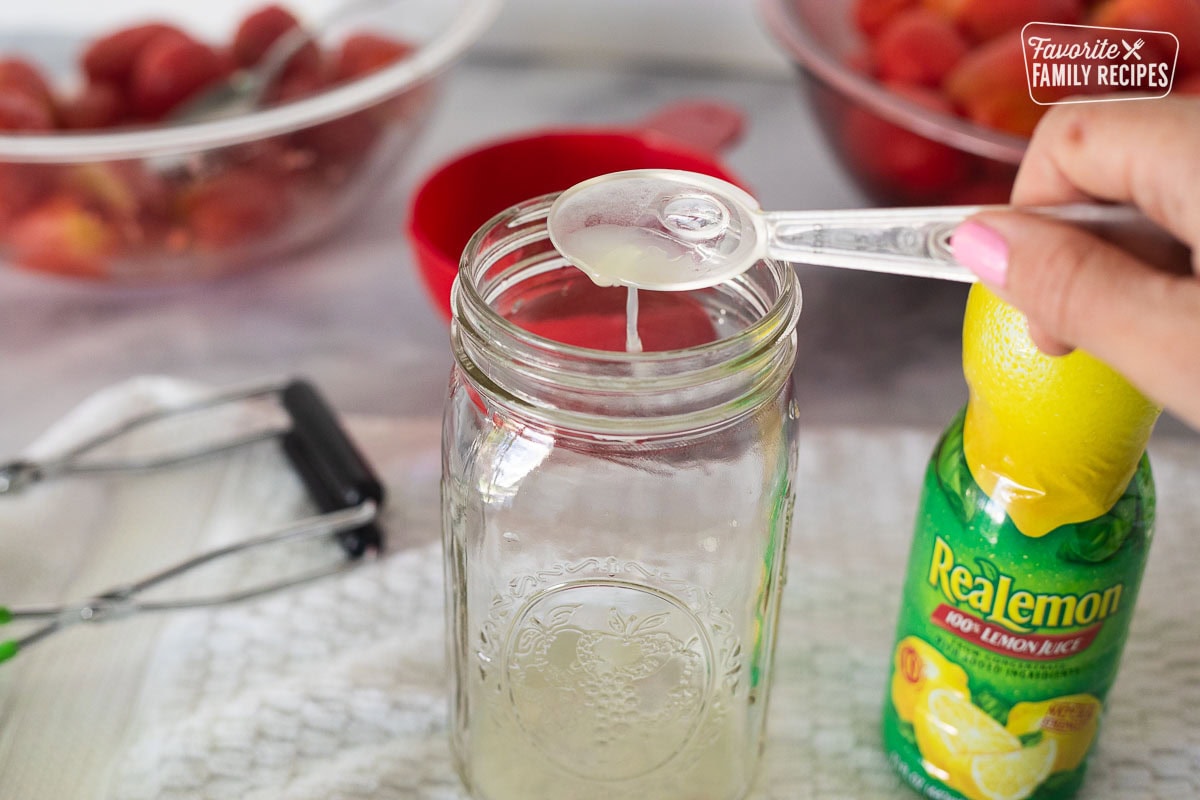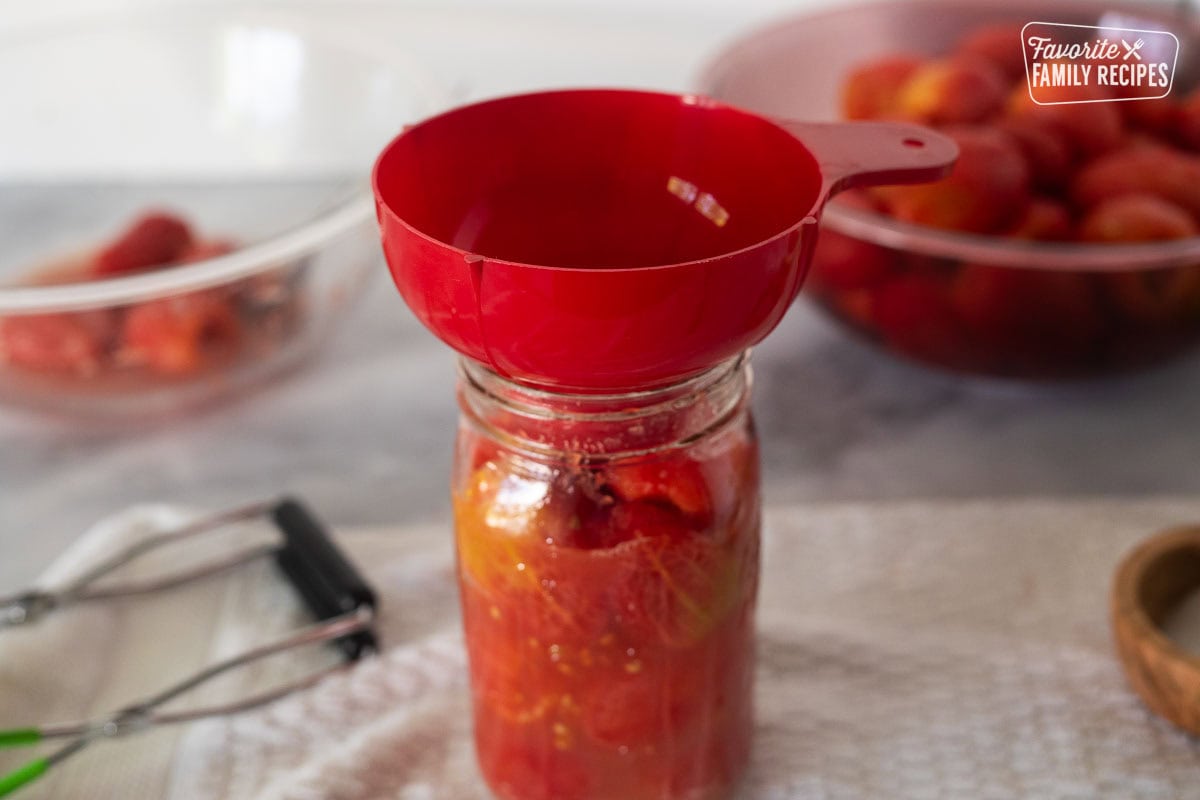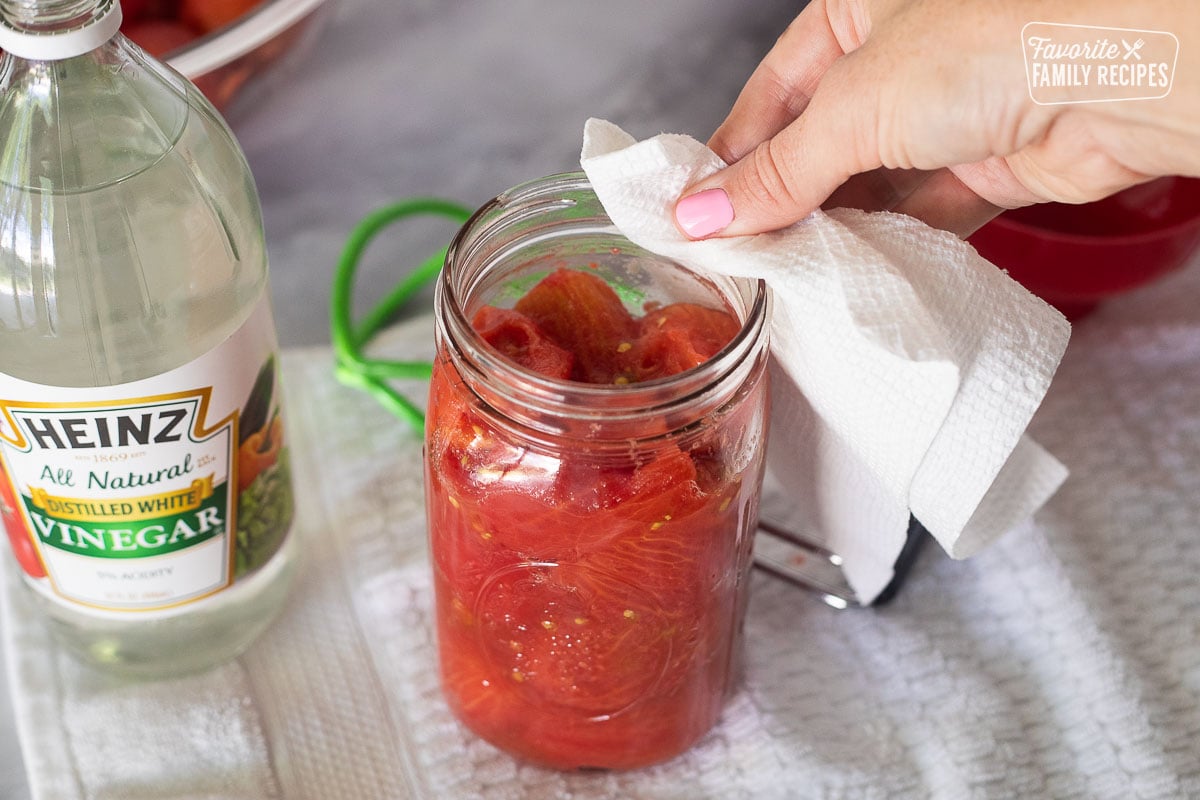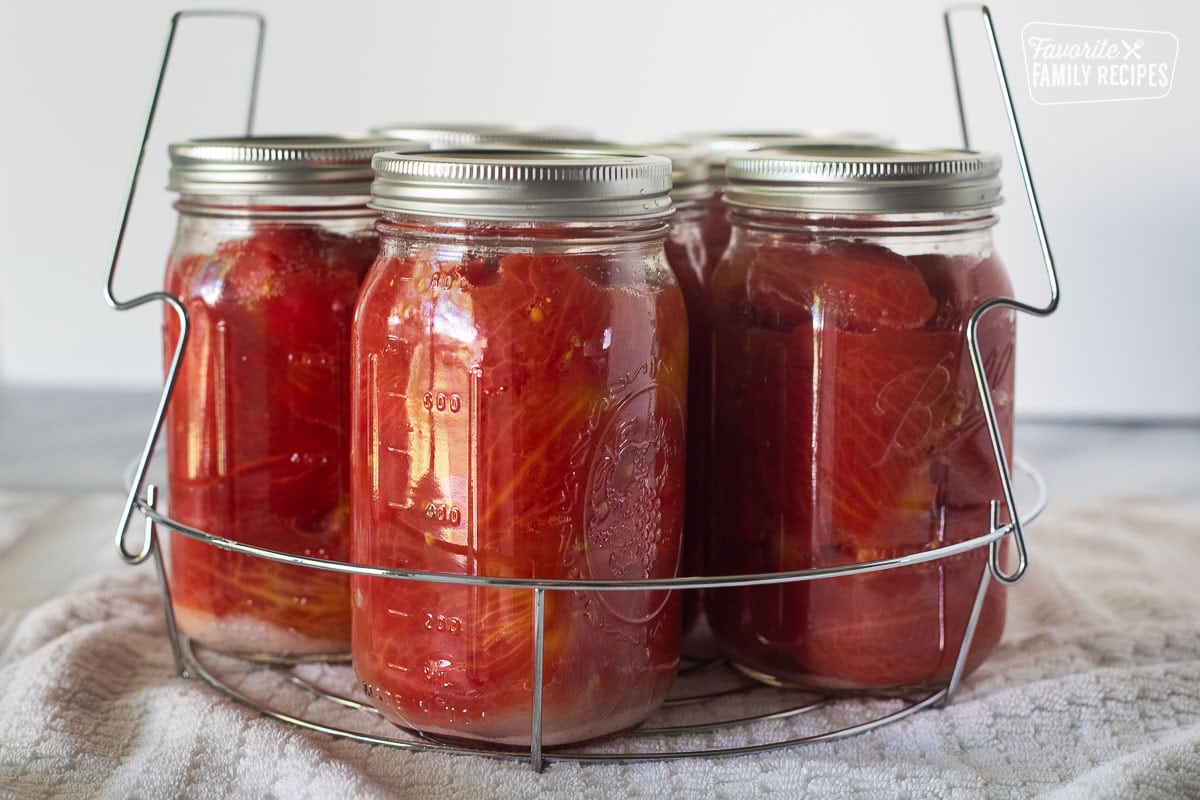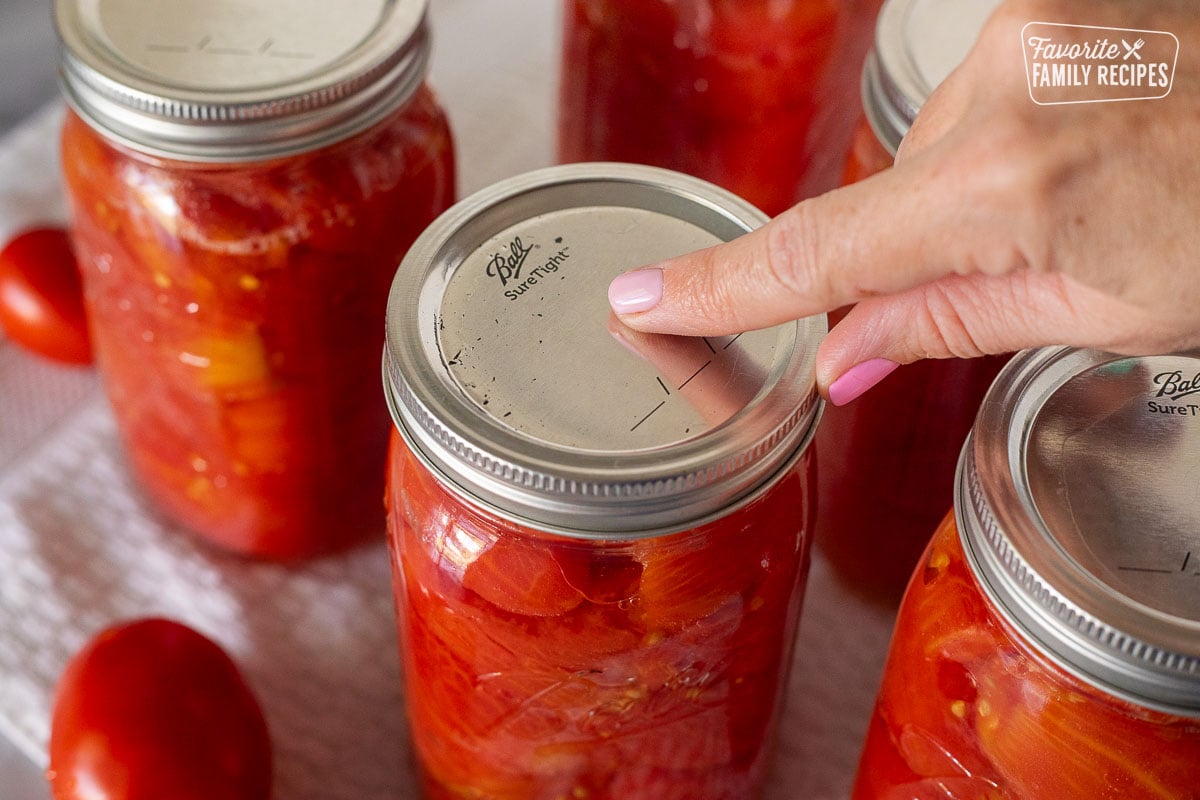I don’t know about you, but in our family, August and September doesn’t just mean “back to school”, it also means “canning time”. It’s actually probably a good thing canning season is in full swing when my kids are back in school because the house can get a little crazy with tomatoes, peaches, and more. My kitchen becomes a full-on canning factory, and a pretty efficient one at that. Our family has been doing this for generations and we have gotten pretty good at it. Whether it’s your first time canning or you are a seasoned canner, I am here to guide you every step of the way! You will be a pro canner before you know it!
Equipment Needed for Water Bath Canning
Canning Jars: Most of the time I like to use wide-mouth jars because they are easier to pack, but regular works great. Canning lids and rings (or bands): Canning lids are just the little flat tops that go right on top of the mouth of the jar. They have a thin little rubbery ring on the bottom that helps the lid cling to the jar and makes it have a tight seal when processed. Water Bath Canner: This is basically just a large pot with a removable wire basket. It’s nothing fancy and generally pretty cheap. The name makes it sound more complicated than it actually is. Jar Lifter: This tool will help you easily lift and lower hot jars. A must for canning. Magnetic Lid Wand: This is basically just a little stick with a magnet on the end. It seems simple but will make placing lids easier and will save your finger tips from getting burned. Funnel: Makes packing jars SO much easier and way less messy. Citric acid (optional): used to raise the acidity in fruit, mostly used for canned tomatoes. You can also use lemon juice.
Using a water bath canner is one method of processing, with steam canning and pressure canning being the other two. Water bath canning is best for high-acid foods, meaning foods with a pH level of 4.6 or less. Foods with a pH higher than 4.6 are considered “low acid” and must be pressure canned. During the water bath process, canned foods are submerged completely in boiling water for a certain amount of time until the jars are adequately heated and the jars are safely sealed for long-term storage.
High acid fruits: Peaches, pears, apples, cherries, berries, plums, cranberries, and apricots. Applesauce and apple butter Salsas and relishes: follow canned salsa and relish recipes closely because you will want to make sure you add the right ingredients to make it acidic enough Pickled vegetables: most vegetables aren’t acidic enough on their own to can. They will have to be pickled to get the right levels. Pickles and beets are great ones to pickle and process in a water bath canner. Jams, Jellies, and Preserves Fruit pie filling Fruit juice Rhubarb Tomatoes, tomato juice, and tomato sauces: tomatoes are actually not quite acidic enough to can on their own, you will most likely have to add lemon juice or citric acid to increase the acidity. Spaghetti sauce: same story as tomatoes, just be sure to follow an actual canned spaghetti sauce recipe and you will be fine. More: For an ENTIRE list of what can be water bath canned, visit the National Center for Home Food Preservation.
First, prepare the jars: Before you start canning, you want to make sure your jars are clean and sterilized. The easiest way to do this is to run them through a “sanitize” cycle in the dishwasher. When they are finished, I like to keep the jars in the dishwasher with the door closed so the jars stay nice and hot. If you keep the jars hot until you put them in the water bath canner, they will be less likely to break. You can also sterilize them by submerging them in water your water canner (open-side up so they get filled with water) and simmering them for 10 minutes, or you can wash them by hand and put them in a 275-degree F oven for 10 minutes until they are dry. There is actually some debate on if the jars actually need to be sterilized because they will be sterilized during the processing process but it’s never a bad idea to overkill when it comes to safety.
Hot Pack vs. Raw Pack
Hot packing means heating your food and putting it in the jars while hot before processing. Raw packing means putting the food directly into the jars and covering it with very hot canning liquid or water. Some raw packing methods don’t require adding hot liquid, but processing times will be quite a bit longer. Some foods are best suited for hot packing while others may be best suited for raw packing. Follow your canning recipe closely and you will be guided on which method to use. Under-processing – Follow your recipes exactly when it comes to the processing time. Under-processed jars are not safe for consumption. Check and double-check these times to avoid spoilage. Using damaged lids – Damaged lids won’t seal. To avoid this, check every jar lid after processing to make sure you have a good seal before shelving. Not adding acid or lemon juice to the jars – This is mostly for tomatoes. You absolutely must add more acidity to your jars when canning tomatoes. If you forget, you will have to add the acidity right away and re-process the jars. Canning Peaches at Home: A complete guideVirginia Sweet Chunk PicklesCanned Spaghetti SauceCanned Salsa Savory Canned SalsaHow to Can Whole TomatoesHow to Can Diced TomatoesHomemade Tomato Juice
